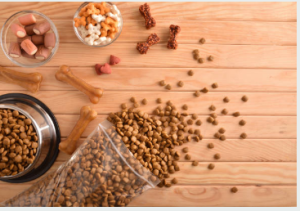Healthy Ingredients To Look For In Your Pet’s Food
Like humans, pets need a balanced diet to stay healthy and active. But with so many different pet foods on the market, knowing which one is right for your furry friend can be challenging. That’s why it’s essential to read the ingredients label carefully before you buy any pet food.
In this blog post, we’ll discuss the healthy ingredients to look for in your pet’s food. We’ll also provide tips on how to spot unhealthy ingredients and avoid common pet food scams.
Essential nutrients for pets
All pets need certain essential nutrients in their diet to stay healthy. These nutrients include:
- Protein: Protein is essential for building and repairing muscle tissue. It is also vital for a healthy immune system and skin and coat.
- Fat: Fat is a source of energy for pets. It also helps to absorb specific vitamins and minerals.
- Carbohydrates: Carbohydrates provide pets with energy and help to regulate digestion.
- Fiber: Fiber helps to keep pets’ digestive systems healthy.
- Vitamins and minerals: Vitamins and minerals are essential for various bodily functions, including growth, development, and reproduction.
Healthy ingredients to look for in pet food
When choosing a pet food, look for one that contains the following ingredients:
- Animal protein: The first ingredient in your pet’s food should be a named animal protein, such as chicken, beef, lamb, or fish. This means the food is made with a significant amount of real meat, not just meat meal or by-products.
- Whole grains: Whole grains are a good source of carbohydrates, fiber, vitamins, and minerals. Look for foods that contain whole grains, such as oats, brown rice, and quinoa.
- Fruits and vegetables: Fruits and vegetables are a good source of vitamins, minerals, and antioxidants. Look for foods that contain fruits and vegetables, such as carrots, peas, blueberries, and apples.
- Healthy fats: Healthy fats are essential for healthy skin and coat, as well as for energy and digestion. Look for foods that contain healthy fats, such as omega-3 fatty acids, which can be found in fish oil and flaxseed oil.
Ingredients to avoid in pet food
When choosing a pet food, avoiding certain ingredients is essential. These ingredients include:
- Meat meal and by-products: Meat meal and results are rendered animal parts often used as fillers in pet food. They are not as nutritious as real meat and can be difficult for pets to digest.
- Artificial colors and flavors: Artificial colors and flavors are added to pet food to make it more appealing to humans, not pets. They can irritate pets’ digestive systems and even cause allergic reactions.
- Preservatives: Preservatives are added to pet food to extend its shelf life. However, some preservatives, such as BHA and BHT, have been linked to pet health problems.
- Corn, soy, and wheat: Corn, soy, and wheat are common allergens in pets. If your pet has allergies, avoid foods that contain these ingredients.
How to spot a pet food scam
Unfortunately, some companies sell pet food that is less nutritious than they claim to be. These companies may use false or misleading advertising to sell their products.
Here are some tips on how to spot a pet food scam:
- Be wary of claims that sound too good to be true. If a pet food claims to be a “cure-all” for all of your pet’s health problems, it’s probably a scam.
- Do your research. Before buying pet food, read reviews from other pet owners and veterinarians.
- Be bold and ask questions. If you need clarification on something, ask the pet food company. They should provide you with clear and concise answers.
Conclusion
Choosing a healthy pet food is essential for your pet’s overall health and well-being. By following the tips in this blog post, you can choose a nutritious and delicious food for your furry friend.
Additional tips for choosing a healthy pet food
- Consider your pet’s age, breed, and activity level. Different pets have different dietary needs. For example, puppies and pregnant or lactating dogs need more protein than adult dogs.
- Feed your pet a variety of foods. This will help to ensure that your pet is getting all of the nutrients they need



